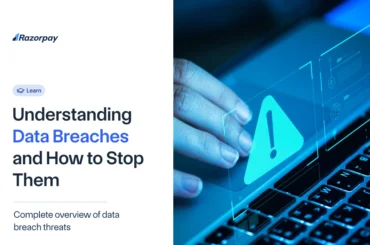Table of Contents
What is RTGS Transfer?
RTGS stands for Real-Time Gross Settlement, a secure electronic funds transfer system in India used for high-value transactions, typically above ₹2 lakhs. In RTGS, funds are transferred and settled in real-time and on a one-to-one basis, ensuring immediate transfer between bank accounts without any waiting period.
With the introduction of 24/7 availability by the Reserve Bank of India, RTGS can now be used at any time of the day, including weekends and holidays. This makes it highly reliable for time-sensitive payments. Since each transaction is settled individually and not in batches, the system eliminates counterparty risk and ensures fast and secure fund transfers.
Key Features of RTGS
Instant and Real-Time Transfer
RTGS processes transactions as soon as they are initiated, with no waiting for end-of-day settlements. This means the money moves instantly from the sender’s bank to the receiver’s bank, ensuring timely fund transfers, especially when urgent payments are involved.
Immediate Clearing and Settlement
Unlike other systems where transactions are grouped and processed in batches, RTGS settles each transaction on a one-to-one basis as soon as it is received. This immediate clearing ensures funds are credited to the beneficiary without delay.
Minimum Transfer Amount of ₹2 Lakh
RTGS is designed for high-value transactions. You cannot transfer amounts less than ₹2 lakh via RTGS, making it suited for corporate payments, large purchases, or business transactions.
No Maximum Limit
There is no maximum cap on the amount that can be transferred using RTGS, providing great flexibility for very large sums without any restrictions.
Secure and Reliable System
Operated by the Reserve Bank of India (RBI), RTGS adheres to strict security protocols and guidelines, making it a highly trustworthy and safe mode of fund transfer.
Availability 24×7
RTGS services are now available round-the-clock throughout the year, including weekends and bank holidays, offering unmatched convenience and flexibility.
Digital and Paperless Transactions
RTGS is completely electronic, eliminating the need for any physical documents or cheques. This reduces processing errors and speeds up transaction times.
Transaction Tracking Facility
Every RTGS transaction comes with a unique reference number that helps users track their payments and confirm the status anytime.
Read More About: Features of RTGS
Benefits of RTGS
RTGS offers multiple advantages for individuals and businesses that need fast and secure fund transfers, especially when dealing with large amounts. Here’s why RTGS is beneficial:
1. Reduced Settlement Risks for Large Transactions:
Since RTGS settles each transaction individually in real time, the chances of payment failure or default are significantly lowered. This is especially crucial when dealing with large sums of money where risks need to be minimized.
2. Enhanced Security and Regulatory Oversight:
Being an RBI-regulated system, RTGS transactions are subject to strict compliance and security measures. This ensures a secure environment, protecting users from fraud, errors, or cyber threats.
3. Faster Fund Availability:
RTGS ensures that the recipient’s account is credited promptly, often within minutes or up to a couple of hours. This fast clearance helps businesses maintain smooth cash flow and individuals avoid payment delays.
4. Convenient 24/7 Access:
Unlike older banking systems that worked only during office hours, RTGS operates 24×7, including weekends and holidays. This means urgent payments can be made any time without waiting for banking hours.
5. Transparency in Charges:
Banks are required to disclose the RTGS transaction fees clearly, which are also regulated by the RBI. This transparency allows users to know exactly what they will pay, avoiding surprises or hidden costs.
6. Ideal for Critical High-Value Payments:
RTGS is the go-to payment system for large business deals, real estate transactions, corporate payments, or any scenario where transferring large sums quickly and securely is essential.
7. Reduced Exposure to Cybersecurity Threats:
Since RTGS settles payments immediately, the window for cybercriminals to intercept or manipulate transactions is minimized, adding an extra layer of security.
8. Improved Financial Management:
With instant confirmation of payments, businesses can better manage their finances, vendor payments, and supplier relationships without waiting for prolonged fund clearance.
9. Legal Backing and Audit Trail:
RTGS transactions are legally binding and come with a clear audit trail, which is helpful for financial records, compliance, and dispute resolution if needed.
What are the Methods of RTGS Transfer?
Here are the different methods to initiate RTGS transfers:
1. Internet banking
Most banks offer online banking services, and you can log in to your account to initiate an RTGS transfer online. In this case, you select the option, enter the name of the beneficiary, amount, and other required details, and then complete the process.
2. Mobile banking apps
In today’s digital world, you can now use your mobile banking app to initiate RTGS transactions as quickly as ever. These apps have been developed to simplify the process and enable you to make RTGS transfers from your mobile internet or tablet.
3. Bank branch
If you are more of a traditional person, you can go to your bank branch and initiate the RTGS transfer in person. The bank staff will help you fill in the form and necessary details, verify them, and process the transaction on your behalf.
What are the Details Required for RTGS Payments?
To initiate an RTGS payment, the following details are typically required:
1. Beneficiary’s Name
Full name of the person or entity receiving the funds.
2. Beneficiary’s Bank Name
Name of the bank where the beneficiary holds the account.
3. Beneficiary’s Bank Branch
The specific branch of the beneficiary’s bank.
4. Beneficiary’s Account Number
The account number where the funds will be credited.
5. IFSC Code
The Indian Financial System Code (IFSC) of the beneficiary’s bank branch to identify the specific location for the transfer.
6. Amount
The exact amount to be transferred (must be above ₹2 lakhs for RTGS).
7. Sender’s Account Details
Information about the sender’s account (name, number, and branch).
8. Purpose of Transfer
The reason or purpose for making the payment, which might be required by the bank.
How Does RTGS Work Online? Step-by-Step Process
RTGS transfers are simple for users and highly secure in the backend. Here’s how the process unfolds:
Step 1: Log in to Net Banking
Visit your bank’s Internet banking portal and log in with your credentials.
Step 2: Go to Fund Transfers
Navigate to the “Fund Transfer” or “Payments” section and select RTGS as the transfer mode. If it’s not directly visible, choose “Interbank Transfer” or a similar option.
Step 3: Add Beneficiary
If transferring for the first time, add the recipient as a beneficiary using their name, bank account number, and IFSC code.
Step 4: Enter Transfer Details
Provide the amount and any optional remarks or references. Review the entered information carefully.
Step 5: Initiate Transfer and Authentication
Confirm the details and authenticate the transaction using the OTP sent by your bank.
Read More About: How to Do Fund Transfer Using RTGS?
What are the RTGS Transaction Charges?
- Inward Transactions: Receiving RTGS payments is free for the recipient. The RBI mandates that banks cannot charge customers for receiving funds via RTGS.
- Outward Transactions: Banks may charge a service fee for sending RTGS payments, but these charges must be within RBI-prescribed limits:
Transaction Amount |
Maximum Service Charge |
| ₹2 lakh to ₹5 lakh | Up to ₹25 (exclusive of taxes) |
| Above ₹5 lakh | Up to ₹50 (exclusive of taxes) |
Important Notes
- These are the maximum limits set by the RBI. Your bank might offer lower fees for RTGS transactions.
- Always check your bank’s website or mobile app for their specific RTGS charges before initiating a transfer. This will ensure you’re aware of the exact cost involved.
What are the Timings for RTGS Payments?
Effective December 2020, the Reserve Bank of India (RBI) has enabled 24/7 availability for RTGS transactions throughout the year. However, it is essential to note that individual banks may have brief maintenance windows during which RTGS processing might be temporarily suspended.
For example:
- State Bank of India (SBI): Offers 24/7 RTGS processing with the exception of a scheduled maintenance window between 11:50 PM and 12:30 AM.
- HDFC Bank: Similar to SBI, HDFC Bank offers 24/7 RTGS processing except for a maintenance window between 11:30 PM and 12:30 AM.
- Axis Bank: Axis Bank provides 24/7 availability for RTGS transactions. On weekdays, transactions initiated between 7:00 AM and 7:00 PM are processed in real-time. Transactions initiated between 7:00 PM and 7:00 AM are processed the following business day.
To ensure a smooth transfer experience, we highly recommend verifying the specific RTGS availability and processing times with your respective bank before initiating a transaction.
Read More: RTGS Transfer Timings in India for 2024
RTGS Transaction Limits in India
1. Minimum Amount
RTGS has a minimum limit of ₹ 2 lakh (2,00,000) in India. This ensures that only high-value transactions are processed and there is less traffic on the RTGS system.
2. RTGS Limit Per Day via Bank Branch
RTGS is not subject to any upper limit when bank branches are concerned. This implies that you can send any amount above the minimum limit without any restrictions.
3. RTGS Limit Per Day via Internet Banking
In the case of an RTGS transaction through internet banking, an upper limit is usually set. The majority of banks will impose this limit at ₹ 25 lakh (25,00,000). Some banks have higher limits, while others limit it on the lower side of the estimate for internet banking.
How is RTGS different from National Electronic Funds Transfer (NEFT)?
The transactions done via NEFT are processed in batches. In RTGS, it’s the contrary; transactions are processed continuously on a transaction-by-transaction basis throughout the RTGS business hours.
Read More About: Difference Between NEFT and RTGS
Important Points to be Noted Before an RTGS Transaction
1. Review Terms
Briefly skim the RTGS form to understand your bank’s terms and conditions, which usually align with RBI guidelines. This ensures a smooth transaction.
2. Double-Check Details
Accuracy is key! Verify all beneficiary information, including account number, name, and IFSC code. Errors can lead to delays or failed transfers. Your bank is not responsible for incorrect details.
3. Choose Your Method (if offered)
Some forms might offer both NEFT (for smaller transfers) and RTGS options. Choose based on urgency. Otherwise, the bank will decide (NEFT for < ₹2 lakh, RTGS for > ₹2 lakh).
Challenges of RTGS
Minimum Transaction Limit
RTGS is designed for high-value payments, so you can’t use it for amounts below ₹2 lakh.
Irreversible Once Processed
Once an RTGS transaction goes through, it can’t be reversed — which means there’s no room for error in account details.
Dependent on Banking Systems
The smooth functioning of RTGS relies heavily on bank systems and internet connectivity, especially for online transfers.
Limited Accessibility
While online RTGS is available 24×7, branch-based RTGS can only be done during specific banking hours.
Requires Sufficient Liquidity
Banks need to maintain adequate liquidity to settle transactions immediately, which can be a challenge during high-volume periods.
Operational Complexities
Handling RTGS manually in a branch or managing bulk high-value transactions in businesses can involve paperwork and coordination.
Possible Transaction Charges
Though many banks offer free RTGS transfers online, some may levy charges — especially for offline or business-related transfers.
Conclusion
The Real-Time Gross Settlement (RTGS) system offers a secure and efficient way to transfer large sums of money electronically within India, with the added convenience of 24/7 availability. This means you can initiate and complete RTGS transactions any day of the week, including weekends and holidays. Thanks to the RBI’s removal of transaction fees, RTGS is an even more attractive option for large value transfers. For smaller, immediate transfers, consider alternative methods like NEFT or UPI.
Related Read: How to Check RTGS Status by UTR Number?
Frequently Asked Questions (FAQs)
1. What is the full form of RTGS?
The full form of RTGS is “Real-time Gross Settlement”
2. What types of transactions are typically done using RTGS?
RTGS is generally used for high-value transactions such as:
- Interbank settlements
- Government payments
- High-value business transactions (e.g., property purchases)
3. What is the minimum amount for RTGS?
The minimum amount for making transactions is ₹ 200,000, whereas no limit has been set for the maximum amount.
4. How much time does RTGS take?
RTGS is conducted in “real-time,” and the beneficiary’s account is credited within 30 minutes of the transaction.
5. What happens if I enter incorrect beneficiary details?
It’s crucial to ensure all beneficiary details are accurate to avoid delays or errors. The bank is not responsible for issues arising from incorrect information provided. Double-check all details before submitting your RTGS request.
6. Can RTGS be done without a Cheque?
Making an RTGS transaction is possible without a check. You can accomplish this digitally via mobile apps or by logging in to the internet banking facility provided by your bank.
7. How can I find the IFSC code of the receiving branch?
The Reserve Bank of India (RBI) maintains a publicly accessible list of IFSC codes which is updated on a regular basis. However, it’s generally easier to obtain the code directly from the beneficiary or through your bank’s resources.
8. Can I do RTGS from a non-home branch?
Yes, RTGS may be done through a non-home branch. However, there may be some changes depending on the bank’s policies.
9. How can I check my RTGS status?
You can check the status of your RTGS transaction by checking via bank, using the net banking facility or mobile app.
10. Can I get compensation for a delayed refund of a failed payment?
In some cases, yes. If your bank takes an unreasonably long time to return a failed payment (such as a declined transaction or a reversed charge), you might be eligible for compensation. The compensation rate might be based on the prevailing repo rate set by the central bank, often with an additional percentage (e.g., repo rate + 2%)
11. Whom should I approach for raising a dispute/complaint related to an RTGS transaction?
Contact Your Bank: This is the first step. Reach out to your bank’s customer service department through their phone number or secure website login.
Escalate to the RBI Ombudsman Scheme (RB-IOS): If you’re not satisfied with your bank’s response, you can escalate the complaint to the RBI Ombudsman Scheme. You can file a complaint online through the RBI’s website.
12. How can I use RTGS offline?
RTGS can be done offline by visiting the closest bank branch and completing the RTGS transactions offline. This ensures that those without internet or mobile banking can transfer money using RTGS.
13. What are the disadvantages of RTGS?
The disadvantages of RTGS include:
- The necessity of a demand draft or a cheque when transacting through a branch,
- The restricted access to Internet banking (the maximum limit for this is Rs. 25 lakh).
14. Is it possible to plan an RTGS transaction in advance?
Yes, RTGS transactions can be planned in advance. The transaction can be initiated online or offline, and you must submit the necessary details to the bank. Subsequently, the bank will proceed with the transaction processing at the specified time.
15. How to fill out the RTGS form?
- Please obtain an RTGS form from your bank.
- Fill in your details: account number, amount to be transferred, beneficiary details.
- Confirm the accuracy of the info given.
- Fill the form as required.
- Attach all the documents to the application form and send it to the bank.
- Receive the confirmation of the transaction.
- Make sure to keep the form as evidence.





